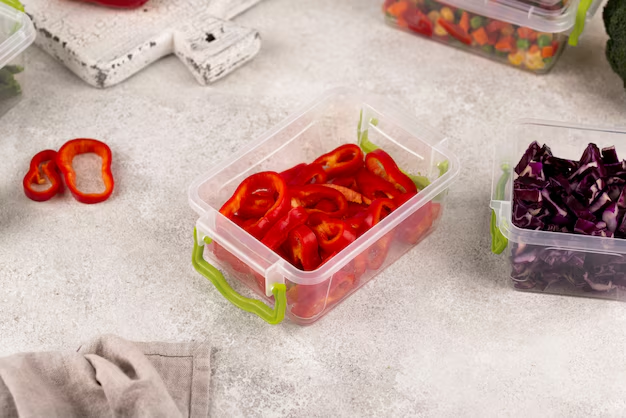Fresh and Flavorful: How Long Can Cooked Greens Last in Your Fridge?
You’ve just finished a delicious meal of sautéed spinach or collard greens, and now you’re faced with leftovers. As tempting as it might be to stash them in the refrigerator and forget about them, knowing how long they last can make all the difference between enjoying a fresh meal and encountering a not-so-pleasant surprise later. In this guide, we explore the shelf life of cooked greens, offering practical insights into keeping your food safe and tasting great.
Understanding the Shelf Life of Cooked Greens
When it comes to the lifespan of cooked greens in your refrigerator, general food safety guidelines suggest they typically last 3 to 5 days. This timeframe isn't just a suggestion; it's crucial for maintaining the safety and flavor of your greens. Factors affecting this lifespan include the freshness of the greens before cooking, how they were cooked, and, importantly, how they are stored post-cooking.
Key Factors Influencing Freshness
- Type of Green: Some greens like kale and collards are heartier and might last longer than delicate ones like spinach.
- Refrigeration Practices: The sooner you get those greens into the fridge after cooking, the better.
- Storage Method: Airtight containers help maintain freshness by keeping out moisture and oxygen.
Practical Tip: Storage Temperature
Aim to store your cooked greens at or below 40°F (4°C), the ideal temperature to slow bacterial growth.
How to Properly Store Cooked Greens
Preserving the lifespan and tastiness of your cooked greens involves more than just tossing them into the fridge. Here’s a closer look at effective storage methods:
Opt for Airtight Containers
Why it matters: Air is the enemy of freshness. Airtight containers minimize air exposure, reducing spoilage and keeping those nutrients locked in.
Cool Before You Store
Quick Tip: Let greens cool to room temperature before placing them in the refrigerator. Hot food can raise the fridge’s temperature, which may lead to spoilage of nearby items.
Label and Date
Be proactive about noting down the date of cooking on the container. This simple act can be an effective reminder to consume the greens before they go bad.
Signs Your Cooked Greens Are No Longer Good
Even with the best storage practices, it’s important to recognize when your cooked greens have overstayed their welcome.
- Unpleasant Odor: A sour or off-putting smell is a red flag.
- Texture Changes: Sliminess or mushy texture indicates that the greens are way past their prime.
- Color Changes: If vibrant greens start to turn yellowish or brown, it’s likely time to toss them.
The Science of Keeping Cooked Greens Fresh
How you prepare your greens can also affect their shelf life. Let’s break down some science-backed cooking and storage techniques:
Quick Blanching Before Cooking
Blanching your greens briefly in boiling water before the main cooking process can help preserve their vibrant color and nutrient content.
Use of Acidity
Adding a splash of vinegar or lemon juice while cooking can act as a natural preservative, prolonging freshness by deterring bacterial growth.
Avoid Overcooking
Overcooking greens can lead to quicker spoilage as the cellular structure breaks down, making them more susceptible to bacterial activity.
Incorporating Leftover Greens Into Meals
Not only can stored greens be a quick meal solution, but they can also add nutritional value to various dishes.
Stir Them Into Soups
Leftover greens can enhance the flavor and nutrition of soups and stews. Simply add them toward the end of cooking for a quick infusion of color and nutrients.
Boost Your Breakfast
Add sautéed greens into your morning eggs or omelets for a nutritious start to your day.
Elevate Your Pasta Dishes
Toss cooked greens with some roasted garlic and toss into freshly cooked pasta for a quick, healthy dinner.
Summary: Quick Tips for Storing and Using Cooked Greens
Here's a handy summary to keep your cooked greens fresher longer:
- 🌡️ Keep It Cool: Store below 40°F (4°C).
- 🕒 Follow the 3-5 Days Rule: Consume within this timeframe.
- 🌿 Use Airtight Containers: Prevent moisture and air exposure.
- ⚠️ Know When to Toss: Unpleasant odor or texture means it's time to go.
- 🍲 Get Creative: Incorporate leftovers into new dishes.
Final Insight: Embracing the Value of Leftovers
Understanding how long cooked greens last in your fridge isn't just about avoiding waste; it's about maximizing flavor, maintaining nutrition, and making the most of your meals with minimal hassle. By following these guidelines, you can ensure that every bite of your greens is as enjoyable as the first.
Whether you're a greens enthusiast or a casual eater, these tips will empower you to handle leftovers like a pro. Use this knowledge to enjoy every nutrient-packed bite while keeping food safety in mind. Happy cooking and even happier storing!
